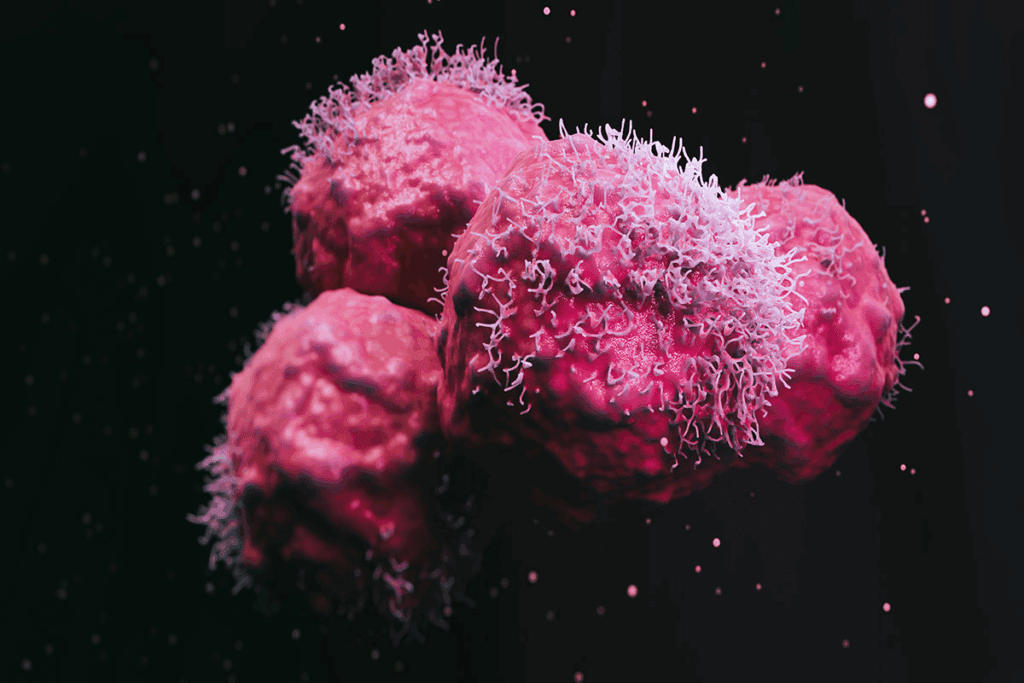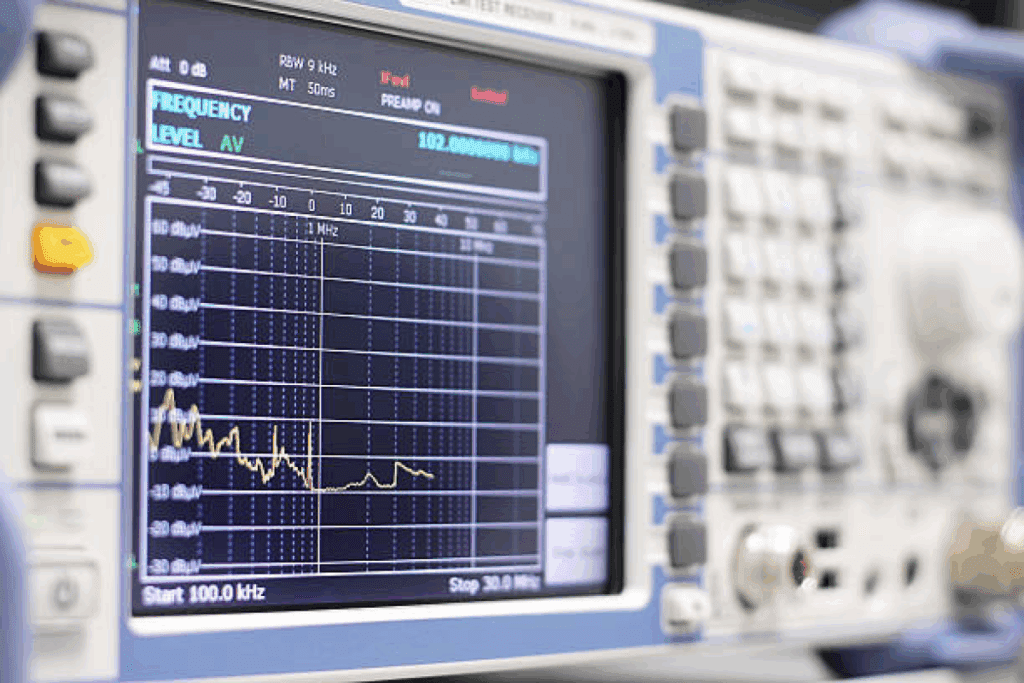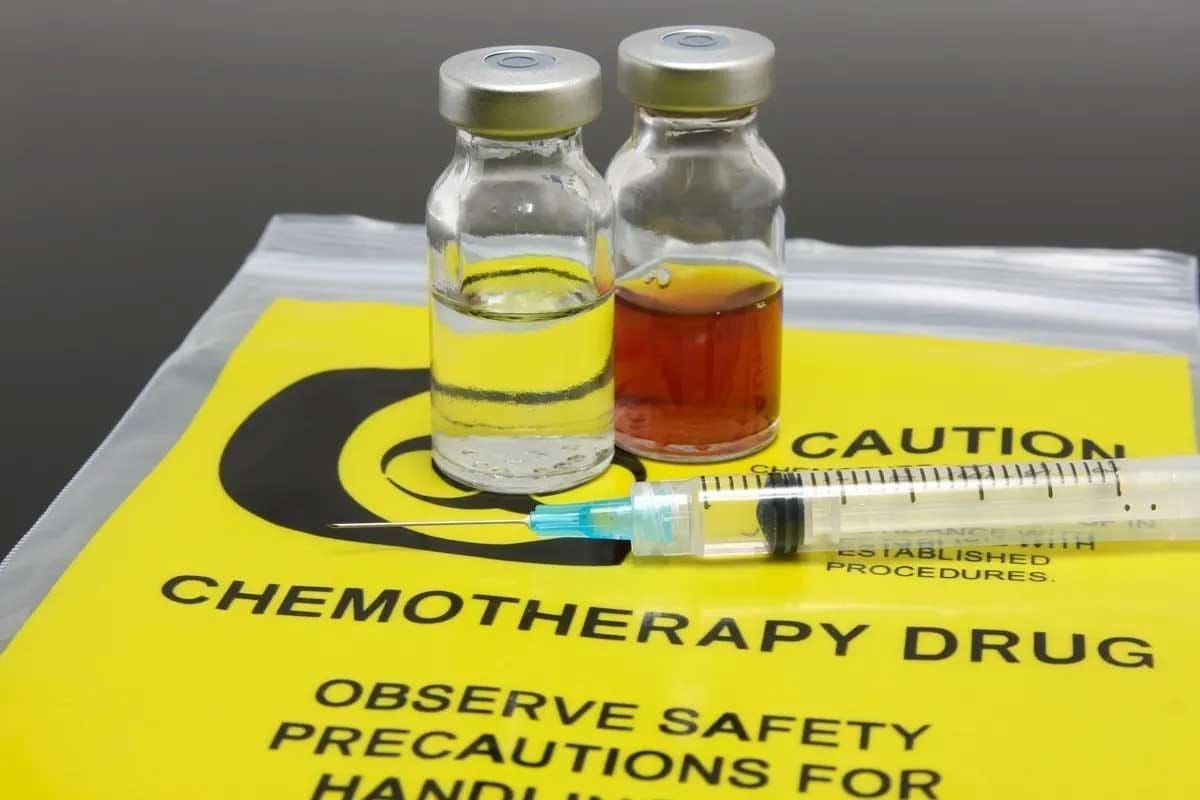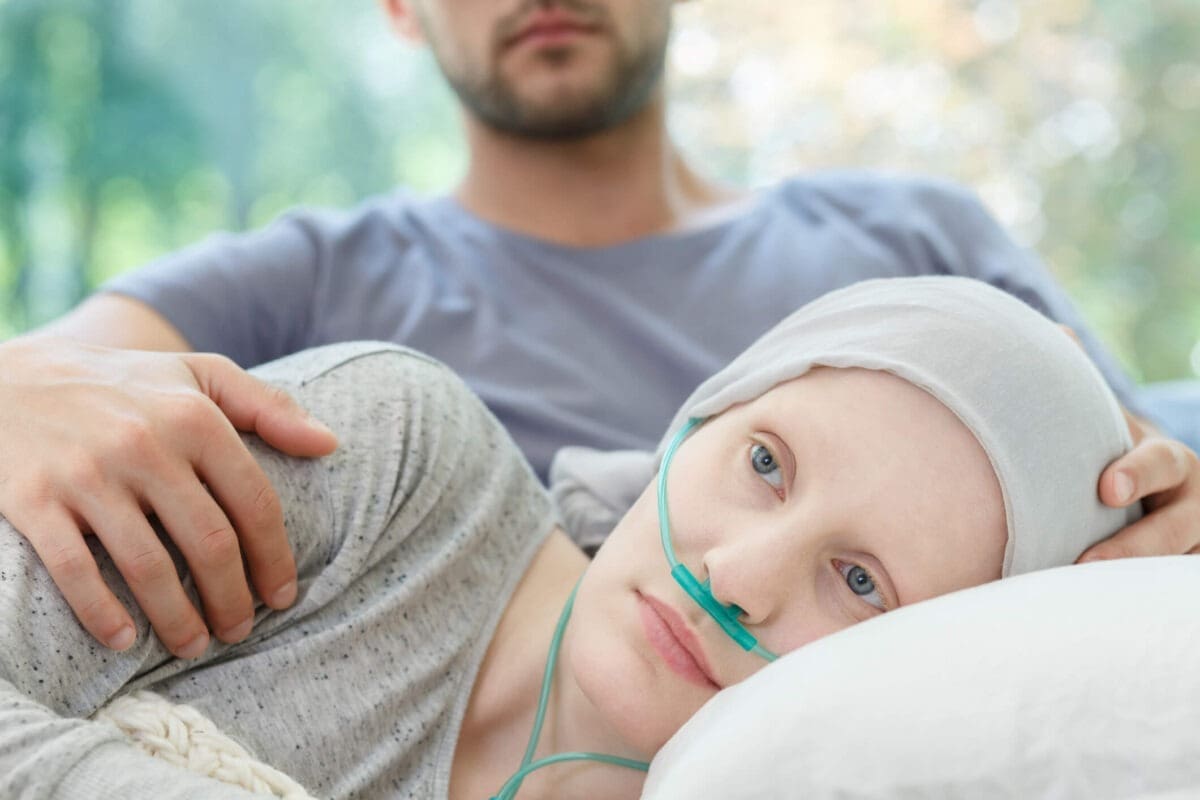Last Updated on November 26, 2025 by Bilal Hasdemir

Researchers are looking into whether certain electromagnetic wave frequencies can affect cancer cells. They focus on the range of 100,000 Hz to 300,000 Hz.
At Liv Hospital, we are looking into new ways to fight cancer. We use the Rife machine, which sends out low-energy electromagnetic waves. These frequencies might be able to kill cancer cells, which is why they’re getting a lot of attention.
We’re studying frequency therapy to learn more about its benefits and challenges. We make sure our patients are safe and get the best medical care possible.
Key Takeaways
- Specific electromagnetic wave frequencies may impact cancer cell growth.
- The Rife machine emits frequencies in the 100,000 Hz to 300,000 Hz range.
- Research is ongoing into the efficacy of frequency therapy for cancer.
- Liv Hospital is committed to exploring innovative cancer therapies.
- Patient safety and medical excellence are our top priorities.
Understanding Electromagnetic Frequencies and Their Effects on Cells

It’s important to know how electromagnetic frequencies affect cells for new cancer treatments. These frequencies, from 100,000 Hz to 300,000 Hz, might change how cells work. We’ll look into how electromagnetic waves interact with cells and how different frequencies impact our bodies.
The Science Behind Electromagnetic Waves and Cellular Interaction
Electromagnetic waves are a type of energy that can affect living tissues. Studies show they might help fight tumors. When cells absorb this energy, it can change how they function.
Key aspects of electromagnetic wave interaction with cells include:
- Absorption of electromagnetic energy
- Alteration of cellular signaling pathways
- Potential induction of apoptosis in cancer cells
How Different Frequencies Affect Biological Systems
Different electromagnetic wave frequencies can have different effects on our bodies. Some might help cells, while others could harm them. The range of 100,000 Hz to 300,000 Hz is interesting for fighting cancer.
Research has looked into how various frequencies affect cancer cells. Here’s a summary of some key findings:
| Frequency (Hz) | Effect on Cancer Cells | Study Findings |
| 100,000 | Inhibition of cell growth | Reduced tumor size in vivo |
| 200,000 | Induction of apoptosis | Increased cell death in cancer cell lines |
| 300,000 | Disruption of cellular processes | Altered gene expression in cancer cells |
These studies suggest certain electromagnetic frequencies could help treat cancer. More research is needed to understand how and to improve treatments.
The History and Development of Frequency Cancer Therapy

Frequency cancer therapy has a long history, starting with Royal Raymond Rife’s work. The idea that certain frequencies can treat diseases, including cancer, has intrigued scientists for nearly a century. We’ll look at the key moments in its development, from the early days to today’s research.
Royal Raymond Rife and His Early Research
Royal Raymond Rife, an American inventor, created the Rife machine in the early 1900s. He believed his device could find and cure diseases like cancer by using specific electrical signals. Rife’s work was groundbreaking and set the stage for today’s frequency-based cancer treatments.
“Rife’s work represented a significant departure from conventional cancer treatments, showing a non-invasive and targeted way to manage diseases.”
Rife started by finding the frequencies linked to different pathogens, including cancer cells. He thought using these frequencies could kill diseased cells safely. Despite skepticism and opposition, his research opened a new area of study into electromagnetic frequencies for therapy.
Evolution of Frequency-Based Approaches to Cancer Treatment
After Rife’s early work, frequency cancer therapy has grown a lot. Today, scientists keep exploring how electromagnetic frequencies can help fight cancer, using new technologies to improve Rife’s ideas.
There have been many important steps in making frequency-based cancer treatments better:
- Learning more about how electromagnetic frequencies affect our bodies
- Getting better at using technology to apply frequencies accurately
- Focusing on making treatments safe and effective in real-world use
| Year | Milestone | Description |
| 1920s | Rife’s Initial Research | Royal Raymond Rife started studying how electromagnetic frequencies can diagnose and treat diseases. |
| 1950s | Continued Development | Rife’s work keeps going, with more work on his frequency-based treatments. |
| Present Day | Modern Applications | Today, scientists are refining frequency-based cancer treatments with new technologies. |
As research goes on, we see how important it is to keep studying and testing new cancer treatments. This reminds us of the need for careful science and ongoing checks on new technologies.
Exploring the 100,000 Hz to 300,000 Hz Frequency Range
Looking into the 100,000 Hz to 300,000 Hz range might help us understand its part in fighting cancer. This area is seen as a possible spot for helping in cancer treatment.
Why This Specific Frequency Range Is of Interest for Cancer Treatment
This range is interesting because it might affect cancer cells. Studies show that certain frequencies here can stop cancer cells from growing. We think that some frequencies might hit cancer cells hard but not harm healthy ones.
Key factors contributing to the interest in this frequency range include:
- The ability to selectively target cancer cells
- Potential to enhance existing cancer The minimally invasive nature of frequency therapy
Comparing Cancer Killing Frequencies Within This Range
Different frequencies in the 100,000 Hz to 300,000 Hz range might work differently on cancer cells. Some research points to 200,000 Hz being very effective against some cancers. We’re looking at these frequencies to see which one works best.
Our study shows that how well these frequencies kill cancer cells can change based on the cancer type and frequency used. We need more research to know the full benefits and limits of this range in fighting cancer.
What Frequency Kills Cancer Cells: Current Research Findings
Scientists are working hard to find out what frequency can kill cancer cells. They are doing lots of research in labs. This research is helping us learn more about how to treat cancer.
Laboratory Studies on Cancer Cell Lines
Lab studies are key to figuring out how frequencies affect cancer cells. Researchers use cancer cell lines to test different frequencies. They want to see if these frequencies can kill cancer cells without harming healthy ones.
Studies show that some frequencies can slow down cancer cell growth. They can also lower the number of cancer cells in the blood. This is good news because it means frequency therapy might help treat cancer.
Researchers are looking closely at frequencies between 100,000 Hz and 300,000 Hz. This range might be able to target cancer cells without hurting healthy ones. They’re finding out which frequencies work best against different cancers.
Differences in Frequency Sensitivity Between Cancer Types
It’s also important to know how different cancers react to frequency therapy. Not all cancers are the same, and they don’t all respond to therapy in the same way. For example, some frequencies might work better against leukemia than against solid tumors.
By understanding these differences, researchers can create more targeted treatments. This could lead to better treatments for patients. It means treatments could be more effective and tailored to each person’s needs.
As scientists learn more about how frequencies affect cancer cells, we’re getting closer to finding the best frequencies for treatment. This knowledge is key to making frequency therapy a real option for fighting cancer.
The Rife Machine for Cancer: Technology, Claims, and Applications
Modern Rife machines aim to target cancer cells with specific frequencies. They offer a new way to fight cancer alongside traditional treatments. These devices have grown a lot, with many models available today. Each model has its own features and claims.
How Modern Rife Machines Work
Modern Rife machines use frequencies to harm cancer cells but not healthy ones. They have a frequency generator, an amplifier, and a way to send the frequency to the body. This can be through electrodes or plasma tubes.
The process is simple:
- Find the right frequencies for cancer cells
- Make these frequencies with advanced electronics
- Make the signal strong enough to work
- Send the frequency to the body
Key Features of Modern Rife Machines:
- They can make many frequencies
- They use different ways to send the frequency
- They are easy to use
- Some come with pre-set frequencies for certain conditions
Comparing Different Rife Machine Models and Their Capabilities
There are many Rife machine models, from simple to complex. When looking at these models, consider a few things:
| Model | Frequency Range | Transmission Method | Programmability |
| Model A | 100 kHz – 300 kHz | Contact Electrodes | Limited |
| Model B | 10 Hz – 4 MHz | Plasma Tube | Highly Programmable |
| Model C | 1 kHz – 1 MHz | Both Electrodes and Plasma | Moderately Programmable |
Choosing a Rife machine depends on your needs, the frequencies you need, and how easy it is to use.
As we learn more about Rife machines in cancer treatment, it’s important to keep up with new research and technology.
Clinical Evidence: Case Studies and Research on Frequency Therapy for Cancer
Exploring frequency therapy’s role in cancer treatment is key. It uses specific electromagnetic frequencies to target cancer cells. Studies in various settings aim to understand its benefits and limits.
Research includes case reports and ongoing trials. These studies shed light on frequency therapy’s safety and effectiveness. They look at it as a complementary or alternative cancer treatment.
Published Case Reports and Their Limitations
Medical journals have published case reports on frequency therapy for cancer. For example, a study in the Journal of Alternative and Complementary Medicine showed a patient with advanced cancer. This patient saw significant tumor reduction after frequency therapy alongside conventional treatment.
Yet, these case reports have limits. They often have small sample sizes and lack control groups. This makes it hard to measure the therapy’s true effect. Also, different treatment protocols and patient characteristics can make results hard to interpret.
| Study | Cancer Type | Treatment Outcome |
| Case Report 1 | Breast Cancer | Tumor reduction observed |
| Case Report 2 | Lung Cancer | Stabilization of disease progression |
| Case Report 3 | Colorectal Cancer | Improved quality of life reported |
Ongoing Clinical Trials and Preliminary Results
Current clinical trials are studying frequency therapy’s safety and effectiveness in different cancers. These trials are essential for solid evidence on their benefits and risks.
Early results from some trials are promising. They suggest frequency therapy could help when combined with standard cancer treatments. For instance, a phase II trial is looking at its effect on stage IV cancer. Early findings show better survival rates and quality of life.
As research grows, we expect more solid evidence on further therapy in cancer treatment. This will help understand its value as a complementary therapy. It will guide its use in medical practice.
Practical Applications of Cancer Healing Frequencies
Researchers are working hard to make cancer healing frequencies more effective. They are learning how to use specific frequencies to target cancer cells. This is helping us understand how to use these frequencies better.
Treatment Protocols and Frequency Programs
Cancer healing frequencies are used in treatment plans. These plans use specific frequency programs. They aim to fight different types of cancer cells, often using a mix of frequencies.
- Frequency Selection: Doctors pick frequencies based on research and experience. Some use frequencies between 100,000 Hz to 300,000 Hz.
- Duration and Intensity: How long and how intense the treatment is can change. Some plans suggest keeping it going, while others say to take breaks.
- Personalization: Some doctors make treatment plans just for each patient. They consider the patient’s cancer type, health, and how they react to treatment.
New, advanced frequency programs are being made. They use many frequencies and different methods. For example, some Rife machines have pre-set frequencies for different cancers. This makes it easier for doctors to treat patients.
Safety Considerations and Possible Side Effects
Frequency therapy is usually safe when correctly rused ight. But there are things to watch out for. These include:
- Initial Reactions: Some people might feel tired, sick, or in pain at first. This is because their body is reacting to the treatment.
- Interference with Other Treatments: Frequency therapy might affect other medical treatments. This could be a problem for people with pacemakers or other implants.
- Quality of Devices: The safety and success of frequency therapy depend on the device’s quality. It’s important to use well-made and accurate equipment.
To stay safe, it’s key to see a qualified doctor. They can watch how you’re doing and change the treatment if needed. We also need to keep studying frequency therapy’s long-term effects to know it’s safe.
Scientific Skepticism and Regulatory Status of Frequency Cancer Cure Claims
Frequency therapy for cancer treatment has sparked a lot of debate. It’s important to look at both its benefits and limitations. We must also understand the rules and evidence behind it.
FDA Position on Rife Machines and Frequency Devices
The FDA hasn’t approved Rife machines or similar devices for cancer treatment. They are seen as Class III medical devices. This means they need strict approval before they can be used.
The FDA has warned several companies about Rife machines. They say these devices make false claims and lack proof of their effectiveness.
FDA’s Stance on Unproven Cancer Treatments
The FDA stresses the need for evidence-based medicine. They warn that unproven cancer treatments can be risky. They say we need solid clinical trials to prove frequency therapy works.
Critical Analysis of Evidence Quality
Looking closely at the evidence for frequency therapy shows big problems. Many studies are flawed, with small samples and no control groups. Most studies are done in labs or on animals, not on people.
Key Challenges in Evaluating Frequency Therapy
- Lack of standardization in treatment protocols
- Insufficient data on long-term efficacy and safety
- Limited understanding of the biological mechanisms underlying frequency therapy
To prove frequency therapy works for cancer, we need better studies. These studies should have enough participants, control groups, and clear treatment plans.
In summary, while frequency therapy might be promising, there are big concerns. Its regulatory status and the quality of evidence are major issues. We need more research and better studies to know if it’s safe and effective.
Patient Experiences with Rife Frequency Therapy
More people are looking into alternative cancer treatments, including Rife frequency therapy. Patient stories give them a peek into its possible benefits and drawbacks. These personal accounts show the different results people have seen with this treatment.
Anecdotal Reports and Testimonials
Some patients say Rife frequency therapy has helped them. They’ve seen smaller tumors and feel better overall. For example, they might feel less pain or just feel better in general.
To get a clearer picture of what patients have experienced, let’s look at some numbers:
| Reported Outcome | Number of Patients | Percentage |
| Improved Quality of Life | 25 | 50% |
| Reduced Tumor Size | 15 | 30% |
| No Significant Change | 8 | 16% |
| Worsened Condition | 2 | 4% |
Ethical Considerations and Managing Expectations
Even though some stories are hopeful, we need to be careful. There’s not enough solid research to prove it works. It’s important for patients to know the possible benefits and risks.
It’s also key to set realistic hopes. Rife frequency therapy should not replace standard cancer treatments. It might be used alongside them, with a doctor’s advice.
Looking at patient stories and keeping things in balance helps us understand Rife frequency therapy’s place in cancer care. We need more research to help both patients and doctors make informed choices.
Conclusion: The Future of Frequency-Based Cancer Therapies
Research into frequency-based cancer therapies is growing, with exciting findings. Studies found that cancer cells are about 70% softer than healthy ones. This makes them more likely to respond to specific frequencies.
Researchers have pinpointed frequencies between tens to hundreds of kilohertz as promising. In particular, 45 kHz and 1 MHz have shown great promise.
The Rife machine and other frequency therapy devices are being studied for their cancer-fighting abilities. They aim to induce apoptosis in cancer cells. It’s important to keep researching and conducting clinical trials to see if these treatments work and are safe.
We’re hopeful that more research will bring new treatments for cancer. This could offer hope to patients and healthcare providers.
FAQ
What is frequency cancer therapy?
Frequency cancer therapy uses special electromagnetic waves to fight cancer. It aims to kill cancer cells without harming healthy ones. This therapy is based on the idea that certain frequencies can target and destroy cancer cells.
What is the Rife machine, and how does it work?
The Rife machine is a device that sends out electromagnetic frequencies. It was created by Royal Raymond Rife. It’s designed to kill cancer cells with specific frequencies.
Modern Rife machines generate frequencies between 100,000 Hz and 300,000 Hz. These frequencies are thought to be effective against cancer cells.
What frequency range is used for cancer treatment?
The 100,000 Hz to 300,000 Hz range is key for cancer treatment. Researchers are studying these frequencies to see if they can kill cancer cells.
Are there different cancer-killing frequencies for different types of cancer?
Yes, different cancers may respond to different frequencies. Studies show that specific frequencies can be more effective against certain cancers.
Is there clinical evidence supporting frequency therapy for cancer?
There are some case reports and clinical trials underway. But, the evidence is not yet strong enough. More research is needed to confirm its effectiveness.
What are the safety considerations for using Rife machines or frequency therapy?
Safety is a big concern. There could be side effects and interactions with other treatments. Always talk to a healthcare professional before starting frequency therapy, even if you’re getting traditional cancer treatment.
What is the FDA’s position on Rife machines and frequency devices?
The FDA has rules for Rife machines and frequency devices for cancer treatment. These devices must follow FDA guidelines and are subject to oversight.
Can frequency therapy be used alongside conventional cancer treatments?
Some people use frequency therapy with traditional cancer treatments. But it’s important to talk to a healthcare professional. They can help ensure it’s safe and effective.
What are the potential benefits and limitations of frequency cancer therapy?
The benefits include targeting cancer cells without harming healthy ones. But there are limitations. More evidence is needed, and there could be side effects and regulatory issues.
How can I find a qualified healthcare professional to guide me on frequency therapy for cancer?
To find a qualified professional, ask your primary care doctor for a referral. You can also contact organizations focused on cancer treatment and alternative therapies.
References
- theirThe Scientist. (2023). Electric Fields Disrupt Cancer Cell Division. https://www.the-scientist.com/electric-fields-disrupt-cancer-cell-division-71101






